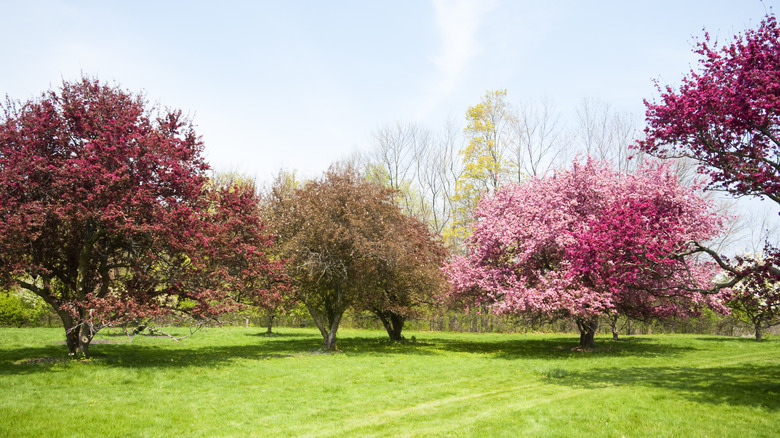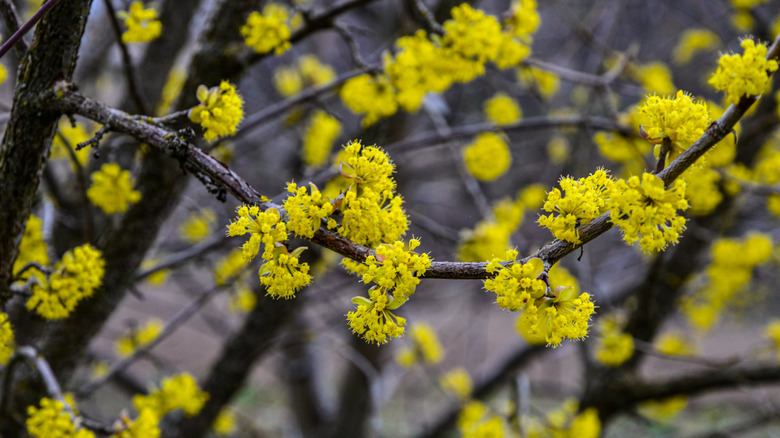The Gorgeous Tree That's The Secret To Early Blooms In February
Are you dreading the lack of color in your yard during the winter and early spring months? If so, you may simply be growing the wrong plants, shrubs, and trees. If you want to have year-round color, you can make it happen with the right additions. To ensure early blooms during February, in particular, there's a gorgeous tree that you should consider growing — the cornelian cherry (Cornus mas). This tree blooms with beautiful yellow flowers, and these typically appear before the blossoms of many other plants. Cornelian cherry trees reach a height of between 15 to 25 feet and has a canopy width of 12 to 20 feet. Thanks to its bright yellow flowers, the cornelian cherry will make your yard look less dull and ready to welcome spring in that early part of the year when the winter just refuses to let go.
If you're in a southern state and live in a milder climate, you can expect the tree to bloom in February. If you live in the country's northern regions, it's more likely to bloom in March instead. The blooms tend to last for about three weeks and offer a great source of nectar for pollinators, such as bees and butterflies.
How to grow a cornelian cherry tree in your yard
Growing a cornelian cherry isn't that different than caring for dogwood trees. The tree grows best in USDA hardiness zones 4 through 8, and both partial shade and full sun work well for this species. It grows in a variety of different soil types, including sand, loam, and clay. While the tree is happiest in a well-drained growing medium that's somewhat acidic or neutral, alkaline soil can work as well. The tree is also very tolerant of heat and drought and is resistant to pests and disease.
Remember that you should give the tree sufficient water — one inch per week is a good rule of thumb. The cornelian cherry needs significantly more water when it's young, but a bit less is required once it matures. Also, keep in mind that fertilizer can be very beneficial as well. Provide the tree with a balanced 10-10-10 fertilizer once in the beginning of the spring and once more a few months later, around the middle of the summer.
The fruit on cornelian cherries is edible, and although the drupes are pretty sour when fresh, they're well-suited for making preserves and see use as ingredients in a variety of dishes. You'll want to be mindful of where these fruits drop, since they can potentially stain a driveway or anything else that lies underneath. The fruit may also attract birds and squirrels, so keep this in mind — consider looking for ways to get rid of squirrels if you don't want them to get to the fruit before you do!

